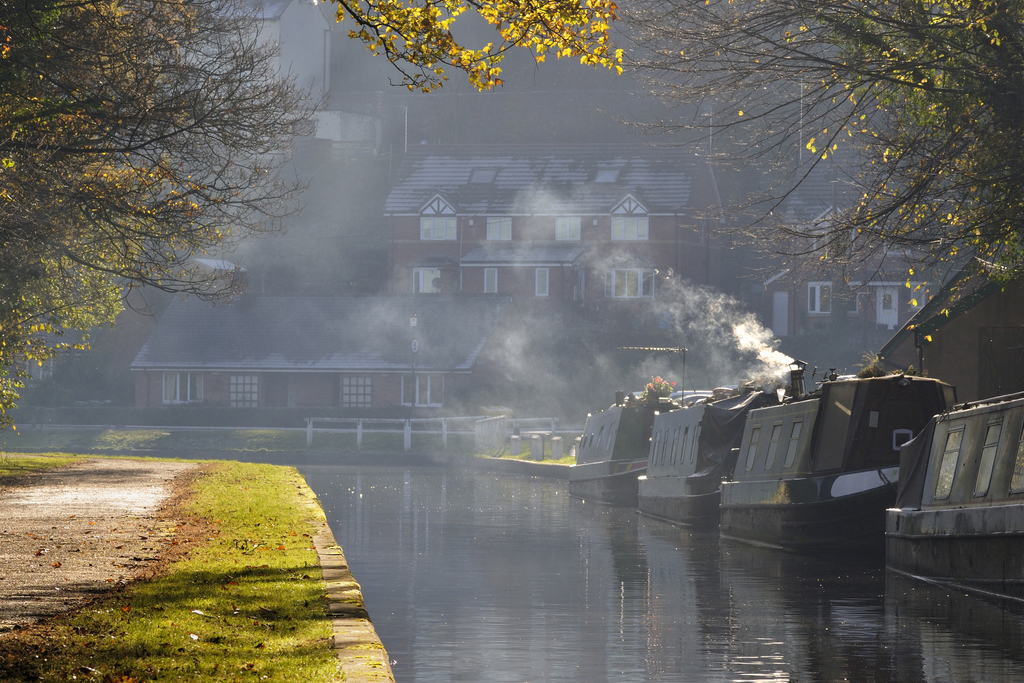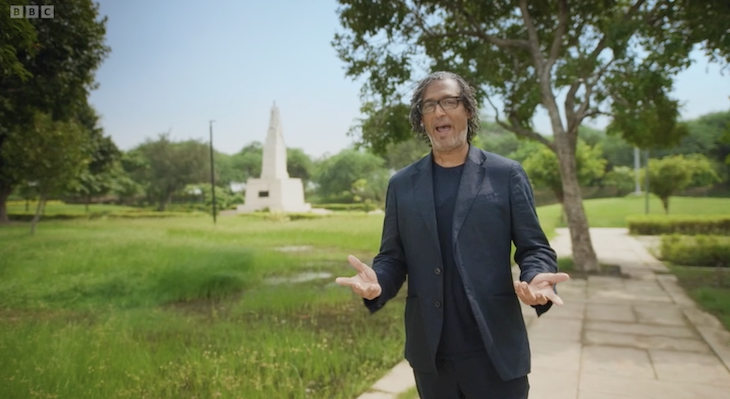Shropshire is a strange county, little known by those beyond its border, and perhaps that’s part of its appeal. It not only has no coastline, but no city officially either. Phone cover is shaky and transport links sparse (at some times in the day, only one bus every two hours will leave my market town, and they cease abruptly around 6 p.m.).
But what it does have are medieval towns, lush green landscapes, and enormous numbers of farm animals – cows, sheep, and horses (for someone coming, as I do, from relatively arable East Anglia, this has a certain H.E. Bates charm to it). The town I’ve moved to, built on a canal, has a livestock auction house on the outskirts, the lowing of cows-for-sale emanating through the carpark outside. If the smell of ordure doesn’t deter the customers, there’s a café attached, selling cooked breakfasts and, appropriately enough, roast beef.
There are plenty of stately homes and castles to visit, but most of them are the kinds of places ten-year-olds, like my daughter who is growing up in Italy, will trudge round with a long face and flagging interest. On her most recent trip to Britain, I wanted to show her a real adventure.
For four days, there were ducks, swans, birdsong, hovering dragonflies, and the eternal, soft whump-whump of the engine
A few months ago, I wrote in The Spectator of wanting to go on a canal trip, and it was the perfect time to make it happen. I took a day’s training first in Audlem with a redoubtable woman named Linda – indispensable for beginners, whatever anyone tells you – and got a crash course in narrowboating essentials (and a baked potato, cooked in the cabin, into the bargain). Linda, an escapee from London who’s lived half her life on the canals, taught me on her 60-foot craft how to start up the engine, steer, brake by reversing, do a three-point turn, tie up the boat, and use a lock.
On a late July Monday, I drove with my cousin and our two young daughters to Whitchurch Marina to claim our rental boat – the 40-foot, green and red ‘Sooty Swift’ – and by late afternoon were chugging peacefully through open fields in the vague direction of Wales. For four days, there were ducks, swans, birdsong, hovering dragonflies, and the eternal, soft whump-whump of the engine, running at about 4 mph. The kids sat on the prow or lay on their beds inside, my cousin made cups of tea and sausage baps, and I steered the boat. This was initially hair-raising, then, as you got used to the tiller and began to feel over time as though you and the craft were one, oddly exhilarating. You slowed down for moored boats, leant on the horn when going round bends, threaded the craft through narrow (numbered) stone bridges, and began to love the slow precision of passing oncoming boats on a tight canal without knocking into them. For one of life’s slowcoaches such as myself, it was the perfect sport.
We moored wherever we wished to – by a village where fresh eggs were sold outside farms (£1, for half a dozen, in a trust box) or once by a vast wooded lake. Occasionally, we’d stop at marinas and meet those who lived there, people in the second half of their lives who had decided to throw it all up for life on a boat – ‘I’m happy as hell,’ one man told us – often with dogs in tow. One marina, Ellesmere, had an approach through a tunnel, so that our children could sit out on deck in the dark and touch the clammy ceiling as we switched on the headlights and nosed our way through. The canals, untouched by time, are another world, so that when you return to this one – even to the sleepiest of towns – and see cars driving quickly and people moving purposefully about their business, it brings you up with a jolt.
The fact our canal was the ‘Llangollen’ and not the Shropshire Union (the ‘Shroppie’) gives some sense of how intertwined Shropshire is with Wales. I had wonderful trips to Wales in childhood – pony-trekking, mountain railways, and male voice choirs – and wanted my daughter to have some of the same. A few weeks after the canal trip, we stayed the night in Llangollen – a touristy place in Denbighshire, with a dramatic weir gushing, roaring, and foaming around great jagged stones. The next day, we set out for Snowdonia, catching a trio of well-connected buses through stone villages and green valleys – tender, voluptuous, and timeless – complete with the odd waterfall roaring down the mountainside. Eventually, the bus left us at Pen y Pass, a base for climbing Snowdon, already at an elevation of over 1,000 ft, where we ate lemon drizzle cake in a hotel café and went outside for the view.
Standing on that mountain pass, witnessing my daughter’s wonder at the emerald peaks and valleys, I realised I was in a better, more life-loving mood (just the oxygen, perhaps?) than I could remember. My daughter, a habitual townie, made me promise to bring her back the next year – camping if need be – and resolved, later in life, to spend summers there with her children. As a long-term Walesophile, with vivid childhood memories of my own, I felt the pleasure of passing something on.
My daughter’s now returned to Italy, with pizza and gelato on hand and the Mediterranean Sea as her backdrop. Many Brits would envy her and never want to leave. But I’m pretty sure the canals of Shropshire and those green mountain peaks in Snowdonia will call her, insistently, back again.







Comments